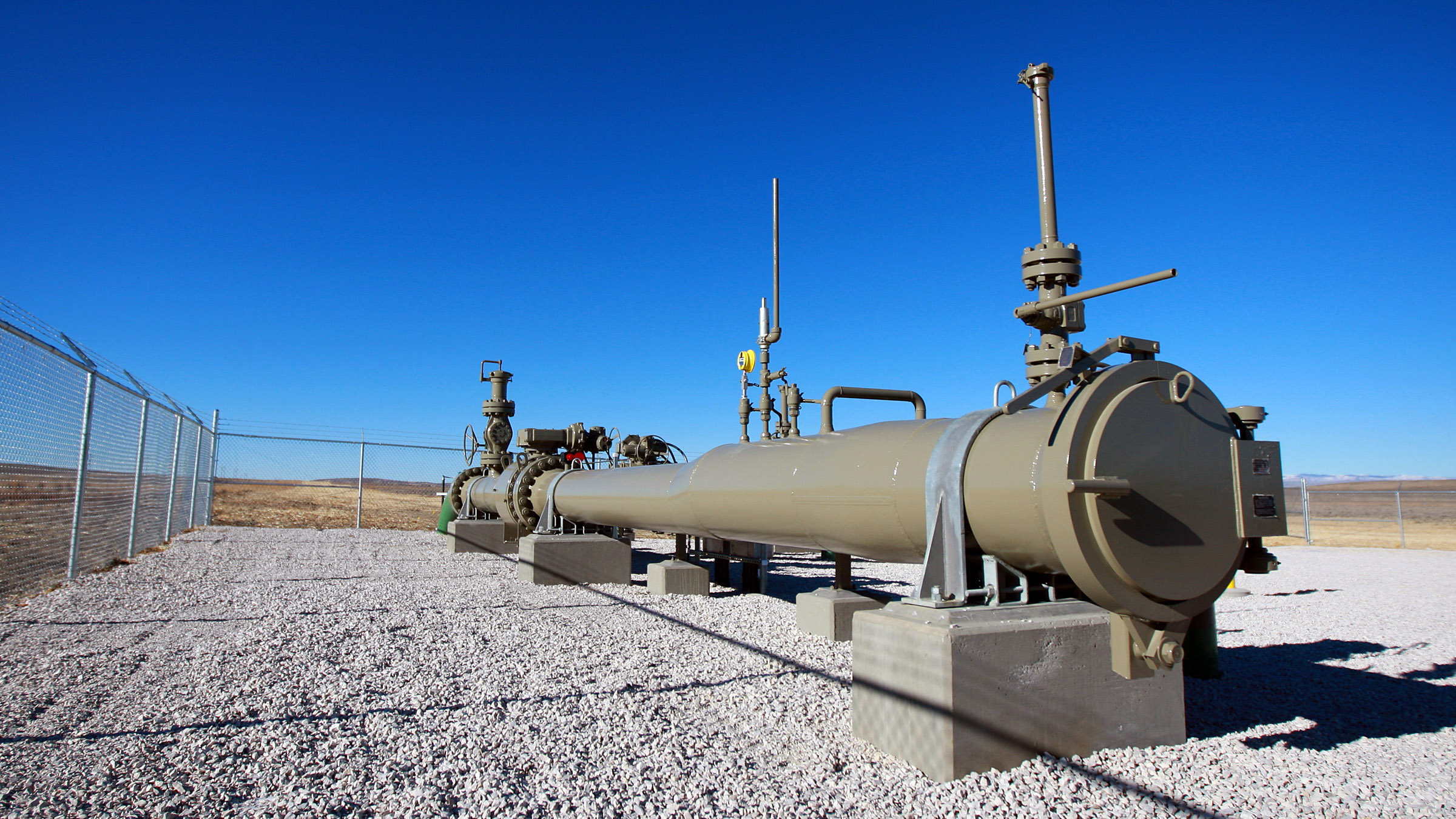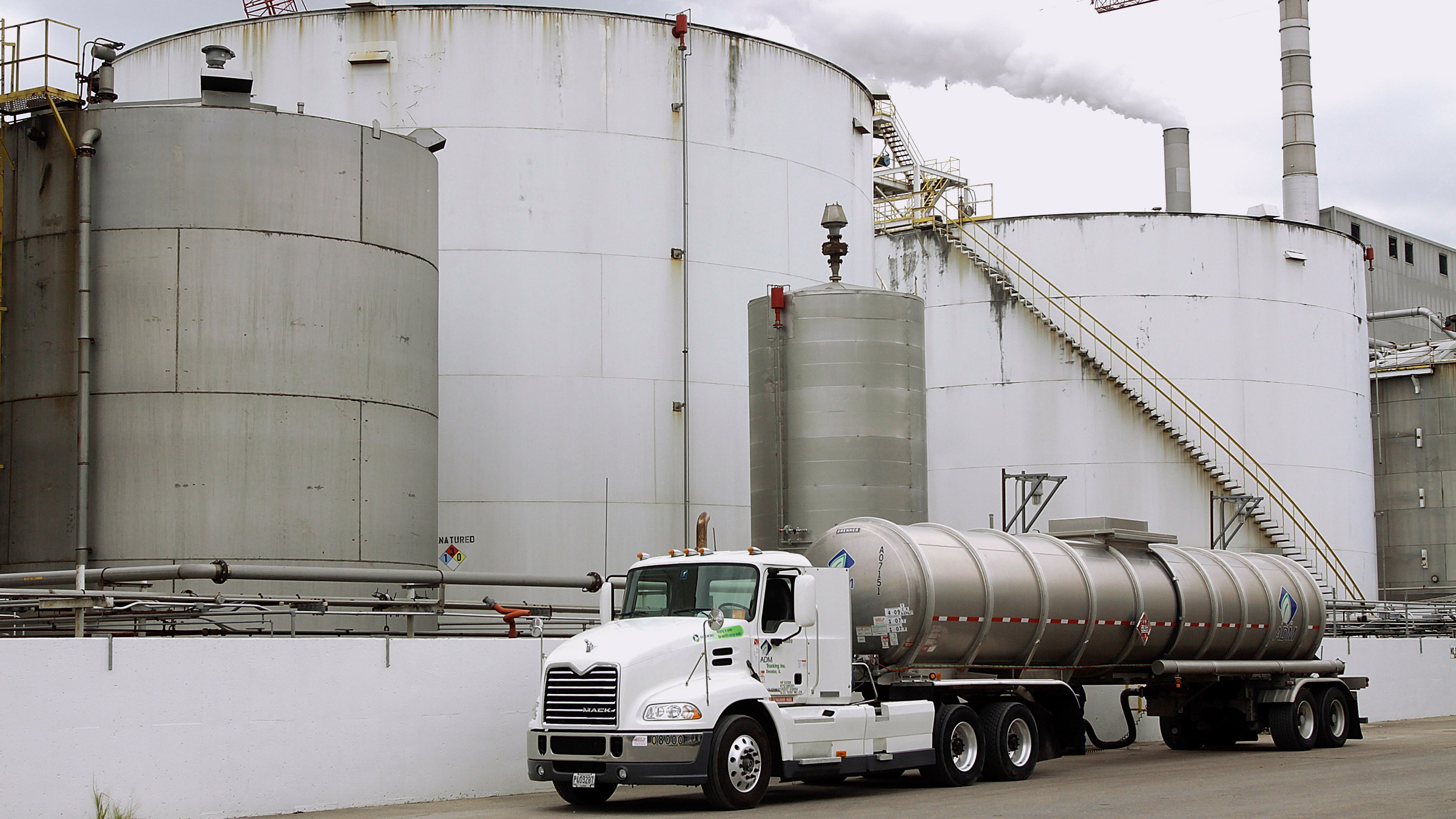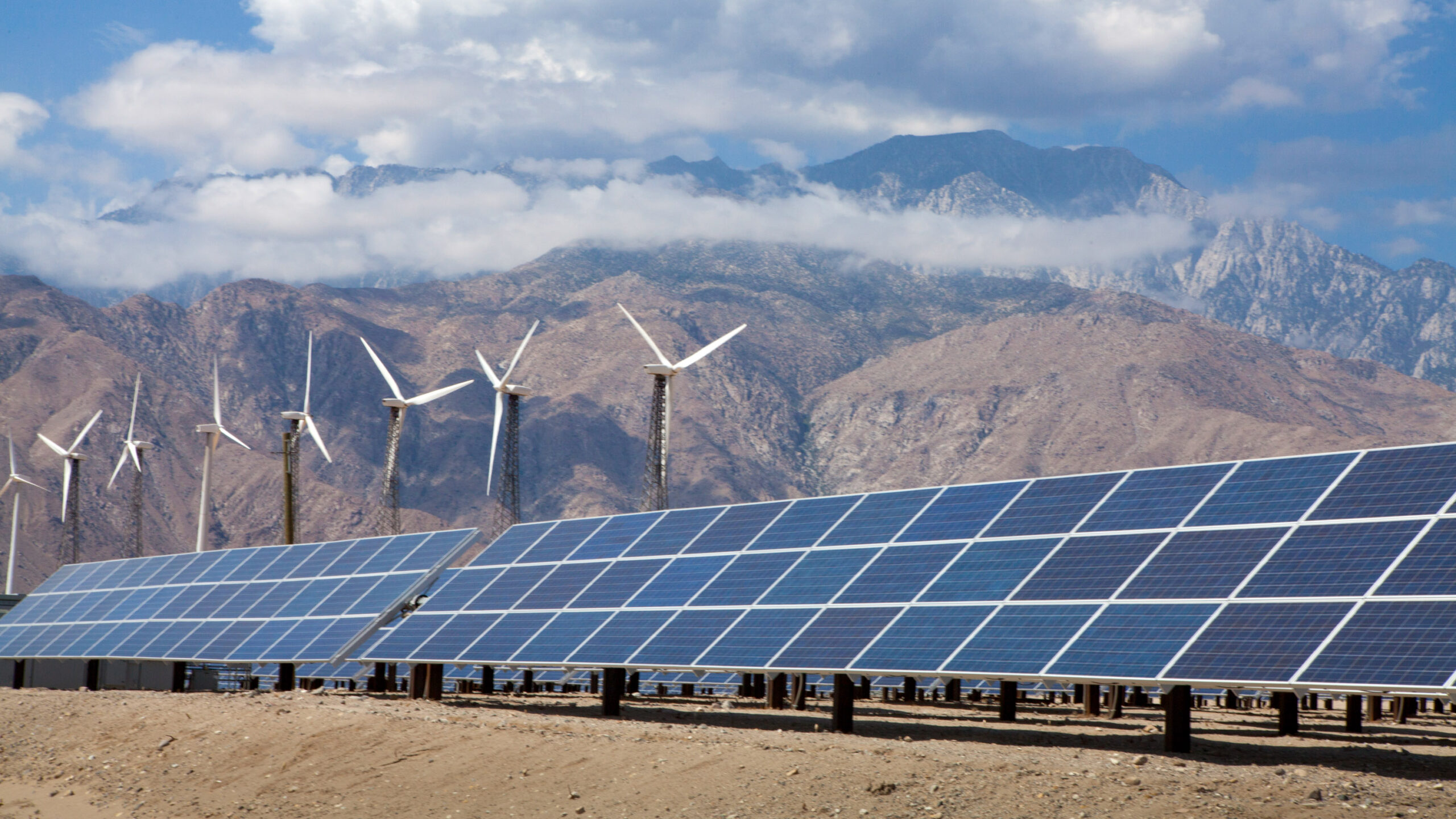Why the carbon capture subsidies in the climate bill are good news for emissions
The Inflation Reduction Act, which US President Joe Biden signed into law last week, will steer tens of billions of dollars into projects designed to capture carbon dioxide that would otherwise be released from power plants and industrial facilities. That provision is proving to be one of the more controversial climate items in the sweeping spending package.
Critics argue that the tax credits for so-called carbon capture and storage, or CCS, are a giveaway to the fossil-fuel industry. They fear that the subsidies will help the energy sector continue extracting oil and gas at a point when the world needs to shift as rapidly as possible to solar, wind, and other clean sources of electricity.
But in the fierce debate over carbon capture, it’s often lost that the technology can also play crucial roles in accelerating emissions reductions across a variety of industries. That includes cleaning up heavily polluting industrial sectors like cement, steel, and fertilizer. The measures can also support the development of low-emissions fuels and what’s known as bioenergy with carbon capture and storage, or BECCS, which the UN climate panel’s models rely on heavily in sketching out feasible scenarios that prevent the planet from warming more than 2 ˚C above preindustrial levels.
Finally, the subsidies should spur the development of carbon dioxide pipelines and storage facilities that will be necessary to move and reliably sequester growing volumes of carbon dioxide in the coming decades, says Paulina Jaramillo, a professor of engineering and public policy at Carnegie Mellon University.
That will be critical for driving down the cost of other carbon capture efforts, making it more affordable to clean up a broader array of products. It will also provide a big boost to the growing efforts to suck the greenhouse gas out of the atmosphere on massive scales, which a growing body of research finds will also be essential for keeping global warming in check. (This type of technology, known as carbon removal, is distinct from capturing emissions before they leave a power plant or factory.)
The Repeat Project, a Princeton-based effort to model the impact of climate policies, estimates that the package will drive about $28 billion in annual capital investments in carbon dioxide transportation and storage projects, as well as power plants with carbon capture equipment, by 2030. At that point, US facilities would trap and sequester some 200 million metric tons of carbon dioxide per year, a 13-fold increase over what would likely occur with just the infrastructure bill that passed last year. The amount of captured carbon will more than double again by 2035, according to the analysis. (By way of comparison, the nation’s greenhouse-gas emissions totaled about 5.6 billion tons in 2021.)
“The IRA creates an opportunity for the US to do [carbon capture and storage] right,” says Julio Friedmann, chief scientist at Carbon Direct, a research, investment, and advisory firm focused on carbon removal. “It provides opportunities to reduce pollution in communities, to grow and test technologies, to create clean jobs, and to be globally competitive on trade and technology.”
The details
The IRA includes hundreds of billions in grants, loans, federal procurements, and tax credits designed to drive research and development efforts, renewable-energy projects, electric-vehicle sales, buildup of a clean-energy manufacturing sector, and more. In addition, it could accelerate the development of carbon capture and storage in several ways.
Most notably, it increases the so-called 45Q tax credits for projects that capture, remove, and store away carbon. With those bigger subsidies, companies in certain sectors could break even or even profit from adding the necessary equipment and managing the resulting carbon.
Specifically, the credit increases from $50 a metric ton to $85 a ton for industrial facilities and power plants that permanently sequester carbon dioxide in deep underground geological reservoirs, according to an analysis by the law firm Gibson Dunn. It also raises that credit from $50 to $180 for facilities that remove carbon dioxide from the air and store it away permanently, a process known as direct air capture.
In addition, the IRA increases the subsidies for plants that pump captured carbon dioxide into wells for the purpose of freeing up additional oil and gas, a controversial practice known as enhanced oil recovery. Those figures now stand at $60 for industrial facilities and $130 for direct-air-capture plants.

The law also aims to make it easier for projects to obtain financing and qualify for the subsidy, by reducing the minimum amount of carbon dioxide that must be captured per year and extending the deadline for new projects to start by about six years. Additional changes make it simpler for developers to obtain money for the tax credits, so projects should become much easier to finance and build, observers say.
Finally, there are several subsidies that support the production of clean forms of hydrogen, a fuel and feedstock for other products. Hydrogen production processes that begin with natural gas, crops, and other plant materials can all qualify, as long as a significant share of the emissions are captured along the way.
The increased subsidies all come on top of roughly $12 billion in federal support for carbon removal, capture, and storage projects, as well as pipelines and storage facilities, in the earlier infrastructure bill.
‘False solutions’
The big concern around carbon capture is that it could extend the life of power plants fueled by coal or natural gas, incentivize the construction of new ones, and slow the buildout of clean energy sources.
Critics are particularly worried about the tax credits for enhanced oil recovery, which is how most US carbon capture projects to date have put the carbon dioxide to work. Technically, when the gas is injected into wells it should remain trapped if they’re capped properly. If that happens, it’s possible, though certainly not guaranteed, for the resulting fuels to be at least carbon neutral. That means, on balance, they wouldn’t emit any more carbon dioxide than is stored away in the process of extracting them.
But many argue that the government shouldn’t subsidize or extend a social license for the continued extraction of fossil fuels at this stage, and even some proponents of carbon capture and carbon removal fear the practice undermines the public perception of these fields. There are also legitimate concerns that oil and gas companies will figure out ways to game these credits, earning money for projects that don’t remove or reliably store away as much carbon dioxide as claimed.
“We need to stop subsidizing oil extraction and carbon dioxide production in the name of fighting climate change and stop burning billions in taxpayer money on white elephant projects,” argued Charles Harvey, a professor of environmental engineering at MIT, and Kurt House, the chief executive officer of KoBold Metals, in a recent New York Times op-ed. “Clean power from carbon capture and sequestration died with the success of renewable energy; it’s time to bury this technology deep underground.”
Capturing carbon also doesn’t ensure that power plants, refineries, and factories don’t release other harmful pollutants, including toxic metals and particulate matter. That energy infrastructure has historically been overwhelmingly located near disadvantaged neighborhoods.
“Unfortunately, corporate spending also won significant concessions in the IRA, including mandatory Gulf and Alaska fossil fuel leases and false solutions like carbon capture, which will disproportionately harm Black, brown, and Indigenous communities,” said Sulma Arias, executive director at People’s Action, a network of grassroots organizations, in a press statement this week. “We will double down on organizing to win more and better representation who will not put our communities in this situation in the future and to oppose this destructive side deal.”
Still, there are many areas of the economy where we don’t yet have affordable, scalable ways of eliminating the emissions driving climate change. Carbon capture and the tax credits supporting it could help a lot in those areas, other experts say. Notably, producing things like steel, cement, fertilizer, and other chemicals often require a lot of heat, which is generally provided by fossil-fuel-driven furnaces. In addition, the chemical reactions in the production processes often release carbon dioxide.
Companies are exploring a variety of technological approaches to cleaning up these sectors through the use of electric-driven furnaces, clean forms of hydrogen, and—as in the case of the MIT steel and cement spinouts Boston Metal and Sublime Systems—alternative electrochemical methods.
But carbon capture may be one of the more effective and affordable long-term approaches in some cases—and it will certainly be among the fastest ways of cutting emissions from the huge existing fleet of plants already producing these products, Carbon Direct’s Friedmann says. After all, no company is eager to shut down and replace hugely expensive facilities before they’ve reached the end of their useful economic life.
Boosting BECCS
The incentives could also accelerate the development of various types of bioenergy with carbon capture and storage (BECCS). That term encompasses a variety of ways of using crops, tree trimmings, or plant material pulled out of forests for fire maintenance to produce electricity or fuels, while capturing and permanently storing away the resulting emissions.
Models in the latest IPCC report rely on BECCS to suck down more than 300 billion tons of carbon dioxide between 2020 and 2100, as a middle estimate.
But the technology has barely gotten off the ground: there are fewer than two dozen projects globally, most in early stages, according to a report released by the Energy Futures Initiative in January. The concept faces a variety of challenges. The facilities are relatively expensive, for example, and the process requires land and crops that might otherwise be used for food.
But the tax credits for carbon capture and storage could help make such projects profitable, and so could the incentives for clean hydrogen in certain cases. Los Angeles–based Mote Hydrogen is pursuing plans to build a plant in California’s Central Valley that would use agricultural waste to produce a clean form of hydrogen, which could then be used to fuel trucks or buses. The startup is banking on the state’s existing subsidies for producing low-carbon fuels to make its projects financially viable.
Mac Kennedy, the company’s chief executive, says the company is currently assessing what various complex provisions of the federal bill, including funds for forest management, could mean for the business. But he says it’s already clear the subsidies may make it feasible to expand their plans beyond California.
“We’re now able to locate anywhere in the United States,” he says. “It really unlocks the map for us.”
‘A huge boost’
There are only about a dozen commercial-scale carbon capture and storage projects operating in the US today, including ethanol plants, fertilizer facilities, and plants that process natural gas for pipelines, according to a database maintained by the Global CCS Institute. But many more, including natural-gas plants and cement factories, are in the planning stages across the nation.
A variety of factors will determine which projects take advantage of the subsidies to incorporate carbon capture equipment into plants right away, starting with whether the tax credit’s increase to $85 per ton at least covers the costs.
Those costs vary widely for different processes, depending on how dilute or concentrated the carbon dioxide is, among other factors. When you add the average transportation and storage costs, carbon capture runs as much as $55 a ton for ethanol facilities, $46 for ammonia, $82 for hydrogen, $88 for natural-gas plants, $89 for steel, and $100 for cement, according to figures from the Clean Air Task Force, the Great Plains Institute, and Wyoming University.

Generally, the types of facilities where carbon capture is cheaper will be more likely to begin taking advantage of the credits first. Those could include ethanol facilities that produce fuel additives from corn, which can be a form of BECCS when carbon capture and storage is involved, or ammonia plants, which produce a crucial ingredient in fertilizer, says John Thompson, technology and markets director at the Clean Air Task Force.
Facilities like cement and steel plants could still come out ahead in geographic locations where there’s already a lot of geological storage and pipelines, such as parts of Texas and Louisiana, he says. But as the tax subsidies provide incentives for more of that infrastructure to be built out, and businesses gain expertise and drive down costs, carbon capture and storage should become increasingly affordable across more areas and industries.
“This is a huge boost,” Thompson says. “This is the first time Congress has adopted policies that will actually create a carbon capture and storage industry at scale.” He thinks there might be “hundreds of projects” by the early 2030s.
Deep decarbonization
The Repeat Project assumes that the US power sector could capture about 90 million tons of carbon dioxide annually by 2030, mainly through existing natural-gas and perhaps coal plants. (It produced about 1.5 billion tons of emissions last year.)
Extending any subsidies that aid fossil-fuel producers and plants is understandably distasteful for many in the climate community, given the industry’s role in spreading climate disinformation, attacking scientists, and refusing to address pollution and its health effects.
Nevertheless, from a pragmatic and emissions-focused perspective, there are still several important roles carbon capture and storage could play in electricity generation.
For starters, much as with heavy industry, it could be a more economically and politically feasible way of addressing emissions from some existing power plants today, Friedmann says. Here again, owners aren’t likely to shut down plants that can continue running profitably for decades, at least unless additional state or federal policies force them to. And local citizens and politicians often won’t be keen to lose the associated jobs.
(The Inflation Reduction Act, which is focused on incentives, doesn’t include emission reduction mandates or carbon prices, which have largely proved politically infeasible in the US. It does include a fee on methane leaks.)
Carbon capture could also play a role in what’s known as “deep decarbonization” of the power sector. Solar panels and wind turbines can produce major shares of the electricity on the power grid, at costs competitive with fossil-fuel sources. But studies consistently find that it becomes increasingly challenging and incredibly expensive to rely on those sources beyond certain thresholds, because the output fluctuates dramatically throughout the day and year.
In fact, models show that total system costs explode as renewables get close to providing 100% of the electricity on grids, because regions have to build huge banks of batteries or other forms of energy storage that can keep the entire electricity system online when solar and wind sources flag. In addition, areas would need to build many more wind and solar farms just to fill up those batteries during peak generation periods. Those facilities would be redundant and underutilized during much of the rest of the year.

Keeping just a few natural-gas plants with carbon capture systems online could dramatically reduce those system costs on regional grids, while still cutting climate pollution.
To be sure, there are other and arguably better ways to address this need, but many of them are politically unpopular as well. We could build more nuclear or geothermal plants, both of which provide a steady source of low-emissions electricity. We can build out long-range transmission lines that allow swapping of renewable sources across much larger areas. And we can hope that startups will deliver energy storage breakthroughs that can affordably keep the lights on for weeks at a time at very low costs.
But the basic argument for carbon capture in the power sector is that we don’t want to limit options when it’s not yet clear which solutions will prove most affordable and effective across a variety of electricity systems.
“We have a big, diverse country with different regional resource availability, development patterns, social priorities … and it’s unlikely any one clean firm resource will work everywhere,” said Jesse Jenkins, an assistant professor at Princeton and principal investigator for the Repeat Project, in an email. “Something has to work in each part of the country or we’ll fall short of 100% carbon-free electricity goals. So CO2 capture might be the solution in some parts of the country but not others.”
The same “spreading our bets” strategy goes for other sectors as well. If the central goal of climate action is reducing the dangers as rapidly and fully as possible—and it should be—we can’t afford to dismiss a tool that can prevent at least hundreds of millions of tons of climate pollution from reaching the atmosphere each year.
